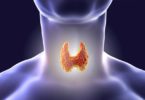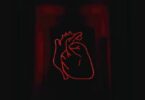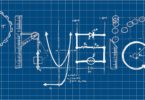Units and Dimensions (Physics) Quiz:
Universal time is based on
(a) Earth’s orbital motion around the earth
(b) Rotation of the earth on its axis
(c) Oscillations of quartz crystal
(d) Vibrations of cesium atom
Two forces of 12 N and 8 N act upon a body. The resultant force on the body has maximum value of
(a) 4 N
(b) 0 N
(c) 20 N
(d) 8 N
Light year is a unit of
(a) Time
(b) Mass
(c) Distance
(d) Energy
If the unit of length and force be increased four times, then the unit of energy is
(a) Increased 4 times
(b) Increased 8 times
(c) Increased 16 times
(d) Decreased 16 times
A hall has the dimensions 10 m x 12m x 14 m A fly starting at one corner ends up at a diametrically opposite corner. What is the magnitude of its displacement?
(a) 17 m
(b) 26 m
(c) 36 m
(d) 20 m
Young’s modulus of a material has the same units as
(a) Pressure
(b) Strain
(c) Compressibility
(d) Force
Which of the following is not a unit of energy?
(a) W – s
(b) kg – m /sec
(c) N – m
(d) Joule
A body moves due East with velocity 20 km/hour and then due North with velocity 15 km/hour. The resultant velocity
(a) 5 km/hour
(b) 15 km/hour
(c) 20 km/hour
(d) 25 km/hour
Related: Electrochemistry questions
Which of the following is not the unit of time?
(a) Micro second
(b) Leap year
(c) Lunar months
(d) Parallactic second
Unit of energy in SI system is
(a) Erg
(b) Calorie
(c) Joule
(d) Electron volt
A man standing on a road hold his umbrella at 30° with the vertical to keep the rain away. He throws the umbrella and starts running at 10 km/hr. He finds that raindrops are hitting his head vertically, the speed of raindrops with respect to the road will be
(a) 10 km/hr
(b) 20 km/hr
(c) 30 km/hr
(d) 40 km/hr
Which of the following quantity is expressed as force per unit area?
(a) Work
(b) Pressure
(c) Volume
(d) Area
In C.G.S. system the magnitude of the force is 100 dynes. In another system where the fundamental physical quantities are kilogram, metre and minute, the magnitude of the force is
(a) 0.036
(b) 0.36
(c) 3.6
(d) 36
Wavelength of ray of light is 0.00006 m. It is equal to
(a) 6 microns
(b) 60 microns
(c) 600 microns
(d) 0.6 microns
Following sets of three forces act on a body. Whose resultant cannot be zero
(a) 10, 10, 10
(b) 10, 10, 20
(c) 10, 20, 23
(d) 10, 20, 40
Related: Kingdom Animalia quiz
Which of the following system of units is not based on units of mass, length and time alone?
(a) SI
(b) MKS
(c) FPS
(d) CGS
Temperature can be expressed as a derived quantity in terms of any of the following
(a) Length and mass
(b) Mass and time
(c) Length, mass and time
(d) None of these
Candela is the unit of
(a) Electric intensity
(b) Luminous intensity
(c) Sound intensity
(d) None of these
Angular momentum is
(a) A scalar
(b) A polar vector
(c) An axial vector
(d) None of these
Which of the following is dimensionally correct?
(a) Pressure = Energy per unit area
(b) Pressure = Energy per unit volume
(c) Pressure = Force per unit volume
(d) Pressure = Momentum per unit volume per unit time
Which is the correct unit for measuring nuclear radii?
(a) Micron
(b) Millimetre
(c) Angstrom
(d) Fermi
The resultant of two vectors A and B is perpendicular to the vector A and its magnitude is equal to half the magnitude of vector B. The angle between A and B is
(a) 120°
(b) 150°
(c) 135°
(d) None of these
Related: Quantum numbers quiz with answers
The dimensional formula for impulse is same as the dimensional formula for
(a) Momentum
(b) Force
(c) Rate of change of momentum
(d) Torque
What is the SI unit of permeability?
(a) Henry per metre
(b) Tesla metre per ampere
(c) Weber per ampere metre
(d) All the above units are correct
Which of the following is a scalar quantity?
(a) Displacement
(b) Electric field
(c) Acceleration
(d) Work
Which pair has the same dimensions?
(a) Work and power
(b) Density and relative density
(c) Momentum and impulse
(d) Stress and strain
Of the following quantities, which one has dimensions different from the remaining three
(a) Energy per unit volume
(b) Force per unit area
(c) Product of voltage and charge per unit volume
(d) Angular momentum per unit mass
A particle has displacement of 12 m towards east and 5 m towards north then 6 m vertically upward. The sum of these displacements is
(a) 12 m
(b) 10.04 m
(c) 14.31 m
(d) None of these
In which of the following systems of unit, Weber is the unit of magnetic flux
(a) CGS
(b) MKS
(c) SI
(d) None of these
Related: Chemistry Amines Questions
Which of the following quantities has the same dimensions as that of energy?
(a) Power
(b) Force
(c) Momentum
(d) Work
Surface area is
(a) Scalar
(b) Vector
(c) Neither scalar nor vector
(d) Both scalar and vector
Henry/ohm can be expressed in
(a) Second
(b) Coulomb
(c) Mho
(d) Metre
Which of the following pairs of physical quantities has the same dimensions?
(a) Work and power
(b) Momentum and energy
(c) Force and power
(d) Work and energy
The foundations of dimensional analysis were laid down by
(a) Gallileo
(b) Newton
(c) Fourier
(d) Joule
A particle has displacement of 12 m towards east and 5 m towards north then 6 m vertically upward. The sum of these displacements is
(a) 12 m
(b) 10.04 m
(c) 14.31 m
(d) None of these
Which physical quantities have the same dimension?
(a) Couple of force and work
(b) Force and power
(c) Latent heat and specific heat
(d) Work and power
Related: Digestive system practice test
Dimensions of the following three quantities are the same
(a) Work, energy, force
(b) Velocity, momentum, impulse
(c) Potential energy, kinetic energy, momentum
(d) Pressure, stress, coefficient of elasticity
How many minimum number of non-zero vectors in different planes can be added to give zero resultant
(a) 2
(b) 3
(c) 4
(d) 5
Out of the following, the only pair that does not have identical dimensions is
(a) Angular momentum and Planck’s constant
(b) Moment of inertia and moment of a force
(c) Work and torque
(d) Impulse and momentum
The quantities A and B are related by the relation, m = A/B, where m is the linear density and A is the force. The dimensions of B are of
(a) Pressure
(b) Work
(c) Latent heat
(d) None of the above
Maximum and minimum magnitudes of the resultant of two vectors of magnitudes P and Q are in the ratio 3 : 1 Which of the following relations is true
(a) P = 2Q
(b) P = Q
(c) PQ = 1
(d) None of these
The dimensions of “time constant” L/R during growth and decay of current in all inductive circuit is same as that of
(a) Constant
(b) Resistance
(c) Current
(d) Time
Which one of the following does not have the same dimensions?
(a) Work and energy
(b) Angle and strain
(c) Relative density and refractive index
(d) Planck constant and energy
Two forces, each of magnitude F have a resultant of the same magnitude F. The angle between the two forces is
(a) 45°
(b) 120°
(c) 150°
(d) 60°
Related: Complex numbers question bank
The pair having the same dimensions is
(a) Angular momentum, work
(b) Work, torque
(c) Potential energy, linear momentum
(d) Kinetic energy, velocity
In the following list, the only pair which have different dimensions, is
(a) Linear momentum and moment of a force
(b) Planck’s constant and angular momentum
(c) Pressure and modulus of elasticity
(d) Torque and potential energy
Dot product of two mutual perpendicular vector is
(a) 0
(b) 1
(c) 2
(d) None of these
Two quantities A and B have different dimensions. Which mathematical operation given below is physically meaningful
(a) A / B
(b) A + B
(c) A – B
(d) None
SI unit of pressure is
(a) Pascal
(b) Watt
(c) Ampere
(d) Joule
How many minimum number of non-zero vectors in different planes can be added to give zero resultant
(a) 2
(b) 3
(c) 4
(d) 5
Density of wood is 0.5 gm / cc in the CGS system of units. The corresponding value in MKS units is
(a) 500
(b) 5
(c) 0.5
(d) 5000
Newton–second is the unit of
(a) Velocity
(b) Angular momentum
(c) Momentum
(d) Energy
Which pair of the following forces will never give resultant force of 2 N?
(a) 2 N and 2 N
(b) 1 N and 1 N
(c) 1 N and 3 N
(d) 1 N and 4 N
Volt/metre is the unit of
(a) Potential
(b) Work
(c) Force
(d) Electric intensity
Related: Chemical Periodicity MCQs
One second is equal to
(a) 1650763.73 time periods of Kr clock
(b) 652189.63 time periods of Kr clock
(c) 1650763.73 time periods of Cs clock
(d) 9192631770 time periods of Cs clock
If for two vectors
the vectors
(a) Are perpendicular to each other
(b) Are parallel to each other
(c) Act at an angle of 60°
(d) Act at an angle of 30°
If force, length and time would have been the fundamental units, what would have been the dimensional formula for mass?
(a) FL-1T2
(b) FLT-2
(c) FLT-1
(d) F
The maximum and minimum magnitude of the resultant of two given vectors are 17 units and 7 unit respectively. If these two vectors are at right angles to each other, the magnitude of their resultant is
(a) 14
(b) 16
(c) 18
(d) 13
Tesla is a unit for measuring
(a) Magnetic moment
(b) Magnetic induction
(c) Magnetic intensity
(d) Magnetic pole strength
A cube has numerically equal volume and surface area. The volume of such a cube is
(a) 216 units
(b) 1000 units
(c) 2000 units
(d) 3000 units
The vector
are perpendicular to each other. The positive value of a is
(a) 3
(b) 4
(c) 9
(d) 13
A sphere of radius ‘a’ moving with velocity v under streamline conditions in a viscous fluid experiences a retarding force F given by F = K a v where K is a constant. The dimensions of K are
(a) M0L0T0
(b) ML-1T-1
(c) ML-2T-1
(d) M0L-2T-2
Related: Electrochemistry Practice Questions
The unit of reduction factor of tangent galvanometer is
(a) Ampere
(b) Gauss
(c) Radian
(d) None of these
The resultant of the two vectors having magnitude 2 and 3 is 1. What is their cross product
(a) 6
(b) 3
(c) 1
(d) 0
Given that force F is Given by F = Pt-1 + Qt, where t is the time. The unit of P is same as that of
(a) acceleration
(b) velocity
(c) displacement
(d) momentum
Electron volt is a unit of
(a) Charge
(b) Potential difference
(c) Momentum
(d) Energy
Parsec is a unit of
(a) Distance
(b) Velocity
(c) Time
(d) Angle
Which of the following is not a unit of time?
(a) solar year
(b) tropical year
(c) leap year
(d) light year
Related: Double Slit Experiment Questions and Answers
Distance traveled by a particle at any instant ‘t’ can be represented as S = A (t + B) + Ct2. The dimensions of B are
(a) M0L1T-1
(b) M0L0T1
(c) M0L1T-2
(d) M0L2T-2
What are the dimensions of gravitational protential?
(a) M1L2T-2
(b) M0L2T2
(c) M0L-2T-2
(d) M0L2T-2
If E, M, J and G denote energy, mass, angular momentum and gravitational constant respectively, then EJ2 / M5G2 has the dimensions of
(a) length
(b) mass
(c) time
(d) angle
A gas bubble from an explosion under water oscillates with a period T proportional to Pa db Ec, where P is static pressure , d is density and E is total energy of explosion. The values of a, b, c are
(a) a = 0, b = 1, c = 2
(b) a =1, b = 2, c = 3
(c) a = 5 / 6, b = -1 / 2, c = 1 / 3
(d) a = – 5 / 6, b = 1 / 2, c = 1 / 3
If the units of length and force are increased four times each, the unit of energy is increased
(a) 4 times
(b) 16 times
(c) 8 times
(d) no increase
Related: Dispersion of light worksheet
The dimensions of the quantities in one (or more) of the following pairs are the same. Identify the pairs :
(a) torque and work
(b) angular momentum and work
(c) energy and Young’s modulus
(d) light year and wavelength.






